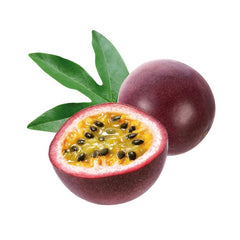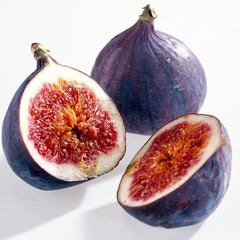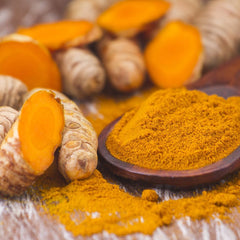What is the Oldest Leathery Perfume?
Click For Affordable Inspired Perfume Alternatives
Perfume has been a part of human culture for thousands of years, serving as a symbol of status, beauty, and personal expression. Among the myriad of fragrances created throughout history, some stand out for their unique compositions, longevity, and historical significance. One intriguing category within perfumery is leathery scents, which evoke images of rugged sophistication, vintage charm, and timeless allure. But have you ever wondered which is the oldest leathery perfume in history? This article explores the origins, development, and notable examples of ancient leathery fragrances, shedding light on their enduring appeal and historical importance.
What is the Oldest Leathery Perfume?
Determining the oldest leathery perfume is a fascinating journey into ancient history and the evolution of scent-making. While exact records are scarce, historical artifacts and archaeological findings suggest that the concept of leathery scents dates back thousands of years. Early civilizations, such as the Egyptians, Mesopotamians, and Romans, crafted perfumes that featured animal-derived ingredients and aromatic resins, creating complex fragrances that often had leathery undertones. Among these, some of the earliest and most influential leathery perfumes include ancient Egyptian formulations and Roman concoctions that have influenced perfumery for centuries.
The Origins of Leathery Fragrances in Ancient Cultures
Leathery scents originate from a combination of natural ingredients and the artistic blending of perfumers in ancient times. Their primary characteristic is the inclusion of animal-derived components, such as castoreum and civet, which impart a rich, warm, and sometimes musky aroma reminiscent of leather. These ingredients were highly valued and often associated with luxury and power.
Ancient Egypt
- Egyptians are credited with some of the earliest known perfumery practices, dating back to around 3000 BCE.
- They used a variety of natural ingredients like myrrh, frankincense, and resins, along with animal-based substances like castoreum, to create complex fragrances.
- Leathery scents may have been used in religious rituals, burial practices, and personal adornment, symbolizing strength and protection.
Ancient Mesopotamia and Persia
- Mesopotamians and Persians refined perfumery techniques, adding aromatic woods, spices, and animal extracts.
- Leathery notes were often associated with nobility and were used in royal ceremonies and personal grooming.
Roman Empire
- Romans popularized the use of leathery perfumes, incorporating ingredients like civet and musk for their luxurious scents.
- The use of leather in combination with fragrant oils signified status and masculinity.
These ancient cultures laid the groundwork for the development of leathery fragrances, influencing later European perfumers and the evolution of perfume making.
Notable Ancient Leathery Perfumes and Ingredients
While specific recipes from antiquity are often lost to history, certain ingredients and formulations are recognized as foundational in leathery perfumery:
- Castoreum: Obtained from the castor sacs of beavers, this ingredient has a rich, leathery, animalic aroma. It was highly prized in ancient perfumery for its durability and depth.
- Civet: Secreted by civet cats, civet oil adds musky, leathery nuances and was used extensively in Roman and Middle Eastern perfumes.
- Leather accords: Created by combining natural ingredients like smoky notes, resins, and spices to mimic the scent of leather without animal products.
- Resins and woods: Myrrh, frankincense, cedarwood, and sandalwood contributed to the complex base notes of ancient leathery perfumes.
These ingredients, especially castoreum and civet, defined the character of early leathery scents, imparting a warm, animalic, and luxurious aroma that has persisted into modern perfumery.
The Evolution of Leathery Perfumes Through the Ages
Over centuries, leathery fragrances have evolved alongside technological advancements and changing tastes, transitioning from natural animal extracts to synthetic alternatives. The decline of use of animal-derived ingredients in the 19th and 20th centuries was driven by ethical considerations and the development of synthetic musks and aroma chemicals, such as ambroxan and iso e super.
Renaissance and Baroque Periods
- Perfumes became more refined, with a focus on balancing leathery notes with floral and citrus accords.
- Leathery scents remained symbols of masculinity and sophistication among European aristocracy.
Modern Era
- Synthetics allowed perfumers to recreate leathery scents without relying on animal products.
- Contemporary leathery perfumes often blend traditional elements with fresh, modern notes, appealing to a broad audience.
- Popular examples include fragrances like Tom Ford's "Tobacco Vanille" and "Oud Wood," which incorporate leathery accords with other luxurious ingredients.
Despite technological changes, the essence of leathery fragrances remains rooted in their rich history, embodying strength, elegance, and timeless allure.
Contemporary Leathery Perfumes Inspired by Ancient Traditions
Modern perfumers often draw inspiration from ancient leathery scents, recreating or reinventing them with contemporary ingredients and techniques. Some notable examples include:
- Le Labo's "Patchouli 24": Combines smoky, leathery accords with patchouli, evoking a vintage feel reminiscent of ancient times.
- Creed's "Royal Oud": Blends oud with leather and spices, creating a regal, timeless aroma.
- Tom Ford's "Tuscan Leather": Offers a rich, velvety leather scent with hints of raspberry and smoky notes, inspired by traditional leathery fragrances.
These modern creations honor the legacy of ancient leathery perfumes while appealing to contemporary tastes and ethical standards by using synthetics and sustainable ingredients.
Conclusion: The Enduring Legacy of the Oldest Leathery Perfume
While pinpointing the absolute oldest leathery perfume remains challenging due to the scarcity of detailed records from antiquity, it is clear that the roots of this scent category stretch back thousands of years. Ancient Egyptian, Mesopotamian, and Roman civilizations pioneered the use of animal-derived ingredients like castoreum and civet, creating fragrances that embodied strength, luxury, and mystique. These early perfumes laid the foundation for centuries of perfumery innovation, influencing both traditional and modern leathery scents.
Today, the essence of ancient leathery fragrances continues to inspire perfumers worldwide. Through the use of sophisticated synthetics and creative blending, contemporary fragrances capture the timeless allure of these historic scents, maintaining their relevance and appeal. Whether you are a fragrance enthusiast, a history buff, or simply someone who appreciates the sophistication of leathery aromas, understanding the origins and evolution of these ancient perfumes enriches the experience of wearing or exploring them.
In essence, the oldest leathery perfumes remind us of the enduring human desire for scents that evoke power, elegance, and a connection to our historical roots—an aromatic legacy that continues to influence perfumery to this day.
Buy Perfumes - Best Online Retailers
Click For Affordable Inspired Perfume Alternatives
Click For The Best Niche Perfumes & Decants
Pheromone Perfumes - Confidence, Attraction & Appeal - Click For More
Home Fragrances & Candle Warmers - Click To Scent Up Your Spaces Today!



